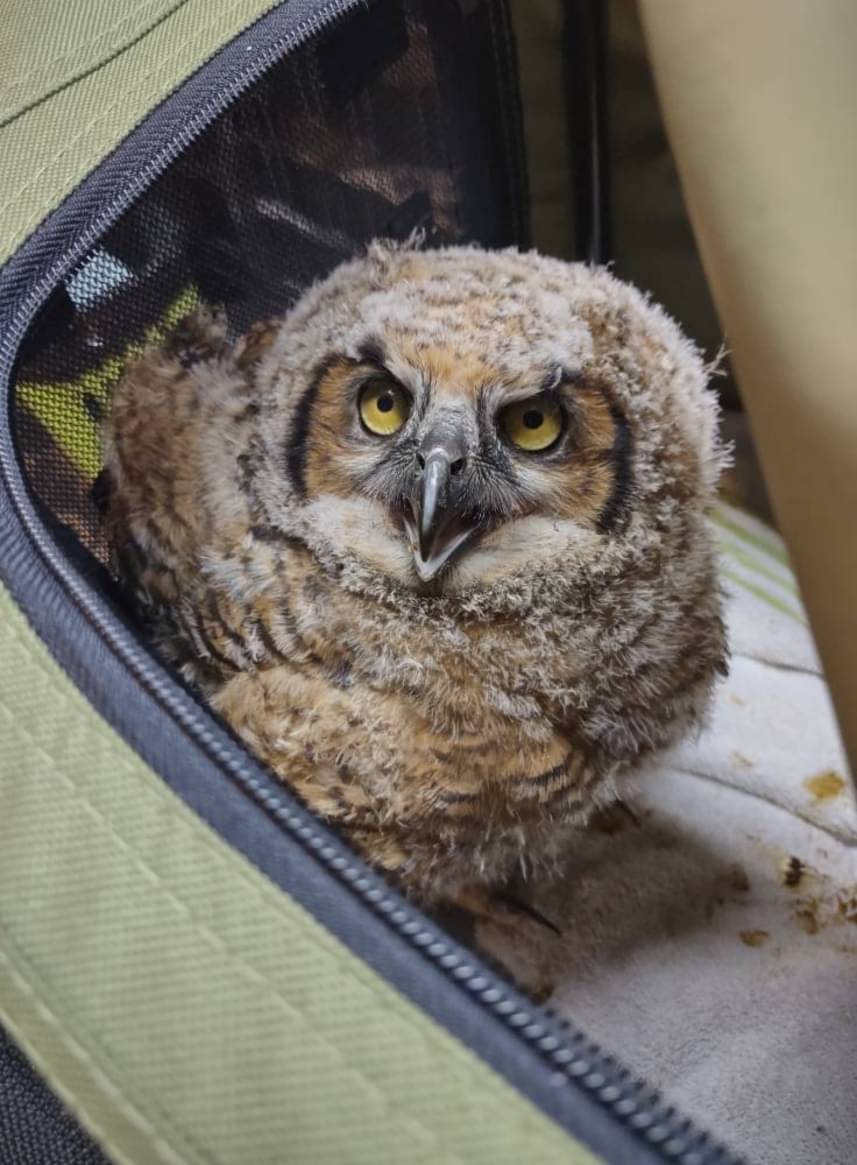From Freedom First Wildlife Rehab
Let’s chat…after several recent incidents, I feel obligated to offer some suggestions when finding injured owls.
Finding an injured owl is a unique and often exciting and overwhelming experience for many people. Owls are experts at hiding injuries and will sometimes go into a passive mode and people are able to carefully pick them up, even holding them without resistance. This is NOT normal owl behavior as they are wild animals and contact with humans causes extreme stress…thus we often see this shut down behavior.
Most people automatically want to comfort the owl but these wild creatures are NOT comforted by you touching them, speaking to them or holding them in the presence of humans. The BEST option for an owl is to place in a well ventilated box or carrier, covered away from humans and pets, dark and quiet until it can be transported to a rehabber. Do NOT transport in your lap!
Sometimes owls will perk up but this does not mean they are ok. Instinct takes over and they may demonstrate fight or flight responses and become very active. DO NOT release them! Their last bit of energy goes into an escape attempt but if they have a severe head injury (indicated by the initial passive behavior), they are not ready to return to the wild and in fact may fly off only to be found deceased later.
Please help us help them by safely containing and contacting your local rehabber as soon as possible. You WILL be asked to transport the owl as wildlife rehabbers do not have the capacity to go out on every call…it’s impossible.
As always, we deeply appreciate your love for these Amazing animals. We always encourage you to be SAFE when helping wildlife especially along roadways! Human safety trumps animals EVERY time!
Also be very aware the wild animals can be dangerous and may attempt to defend themselves as they are unaware you are trying to help. Owls use their TALONS and BEAKS as defense tools. Using heavy gloves and towels is highly recommended!
Thank you for your commitment to our Regional Wildlife.
This may be in response to a recent post I saw from another rehab.
Someone “rescued” an owl and since it was “calm” they hung into it for a few hours, taking photos with it and having friends come over to see the owl they were “helping” and get their selfies with the owl as well.
They finally took it to the rehab. They later found out it has to be put down due to its condition. Stress is really hard on injured birds and it certainly did not help this one.
They then proceeded to publicly trash the rescue online for killing their owl that seemed “fine” to them.
I didn’t want to put that story on here, but when I came across this post with helpful save realistic advice, I thought that would be a good thing to share.
Also, since this is about behind the scenes stuff on how difficult it is to do rehab work, the most recent post from someone I saw said the average rehab for a raptor takes 3 months and costs $3000. We see a lot of owls on here getting fixed up, and that’s just a tiny portion of them, so that adds up fast!
So just keep everything in this post in mind and please keep looking out for your local wildlife however you can!
this is heartbreaking =( thank you for letting us know.
I avoid the negative outcomes and things starting to get “political” as much as I can, but when I come across something like this post written in a serious but not scolding way, I feel it’s important to share with the group.
It’s pretty rough times in the rescue world with the avian flu really harming large numbers of wonderful birds that can’t be saved, so a preventable loss like this probably hits them even harder right now.



